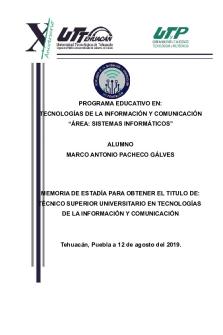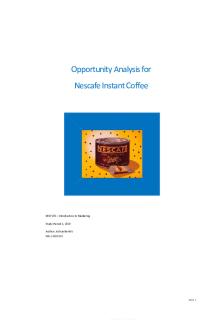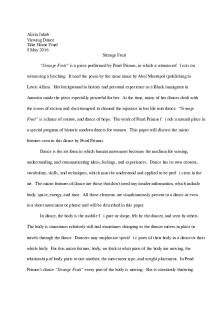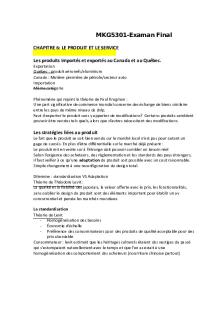[final] Alibaba-report PDF
![[final] Alibaba-report](https://pdfedu.com/img/crop/300x450/mz3kz546w361.jpg)
| Title | [final] Alibaba-report |
|---|---|
| Author | Thùy Trang |
| Course | Corporate Finance |
| Institution | Trường Đại học Ngoại thương |
| Pages | 30 |
| File Size | 950.9 KB |
| File Type | |
| Total Downloads | 47 |
| Total Views | 120 |
Summary
Alibaba financial report analysis...
Description
FOREIGN TRADE UNIVERSITY CORPORATE FINANCE
FINANCIAL RATIO ANALYSIS OF ALIBABA CLASS: TCHE321(1-1819).1
MEMBER LIST 1. HA THUY TRANG
1613340095
2. NGUYEN THU TRANG
1617340097
3. DINH DIEU VY
1617340101
November, 2018
TABLE OF CONTENT I. Introduction to the study.....................................................................................1 1. Introduction.................................................................................................1 2. Objectives.....................................................................................................2 3. Methods of study.........................................................................................2 II. Findings...............................................................................................................2 1. Financial Statements of Alibaba (2016-2018)...........................................2 2. Financial ratio analysis...............................................................................4 2.1 Liquidity..............................................................................................4 2.2 Asset management/Turnover Ratios................................................8 2.3 Leverage...........................................................................................13 2.4 Profitability......................................................................................18 2.5 Market value measure.....................................................................22 3. Ratio analysis.............................................................................................26 III. Conclusion.......................................................................................................27 IV. References.........................................................................................................28
I. Introduction to the study 1. Introduction 1.1 ALIBABA GROUP HOLDING: Alibaba Group is an e-commerce firm that provides consumer-to-consumer and business-tobusiness sales services via web portals. Alibaba Group's headquarters is in Yu Hang District, Hangzhou, Zhejiang Province. Alibaba Group has a revenue of $44.7B, and 66.421 employees. Alibaba Group has raised a total of $24.8B in funding. Alibaba Group's main competitors are Amazon, Ebay and Walmart. As of February 2018, Alibaba Group has 6.0M fans on Facebook and 58.7K followers on Twitter. In recent years, modern technology has become one of the markedly fastest growing sectors in the 21 century. As technology becomes more advanced and sophisticated over time, its role reaches critical levels of importance in the e-commerce value chain. With backbone of technology, ecommerce called electronic commerce or e-business is a system for the buying and selling of goods and services using the Internet as the main means of exchange. One of the most leading e-commerce companies in the world, Alibaba has operated nearly 20 years and gained noticable successes in Asia with more than a billion users worldwide. st
1.2 Financial Ratio analysis and interpretation This financial statement analysis mainly focuses on examining the financial ratio of Alibaba Group Holding over the years. Each calculation and section will encompass graphs and assessments. This data will illustrate the perception and rationale beyond the numbers. Besides, many of companies in the e-commerce industry are competing against one another to win the crown for the leader of the global ecommerce market. Therefore, two companies, Amazon and Ebay are selected to compare their ratios to Alibaba’s with a view to gaining a better insight into Alibaba’s stock. The ecommerce world is dominated by marketplaces such as Alibaba, Amazon or eBay that achieved and maintain huge success through bringing countless third-party sellers into their ecosystems. Three of the most prominent ecommerce players in the market today, Alibaba (BABA), eBay and Amazon operate in a homogenous, complementary way, but provide distinctive user experiences. After assessing all data points, graphs and calculations based on financial ratios, the final decision needs to be made whether to buy or sell Alibaba’s stock. It is recognized that the value of BABA’s brand, its high-growth engine and the massive end market that Alibaba caters to in the incredibly large Chinese e-commerce market boost the potential of company in the long run. The financial statement analysis indicates that it is worth investing BABA’s stock or not.
1
2. Objectives
To understand and interpret the basic concepts of financial statement and financial ratio of a company.
Interpretation of financial ratios and their significance.
To make an investment decision on a company
3. Methods of study
In this report, we will use the financial ratio analysis to evaluate the performance of Alibaba, Amazon, and eBay. Ratio analysis is a powerful tool for financial analysis. This method is used as a benchmark for evaluating the financial position and performance of a firm because the absolute accounting figures reported in the financial statements do not provide a meaningful understanding of the performance and financial positions of a firm. Therefore, in our report, we used “ratio analysis” method to review and analyze Alibaba’s financial statement to make better economic decisions. Different ratios across various categories like liquidity ratios, leverage ratios, profitability ratios, and efficiency ratios help in analyzing the overall health of the company.
II. Findings 1. Financial Statements of Alibaba (2016-2018) 1.1 Income statement (Millions) Period Ending:
3/31/2018
3/31/2017
3/31/2016
Total Revenue
$39,777,000
$22,965,000
$15,638,000
Cost of Revenue
$17,014,000
$8,631,000
$5,312,000
Gross Profit
$22,764,000
$14,334,000
$10,327,000
Research and Development
$3,617,000
$2,475,000
$2,132,000
Sales, General and Admin.
$6,920,000
$4,143,000
$3,172,000
Operating Expenses
Non-Recurring Items
$79,000
$0
$70,000
Other Operating Items
$1,132,000
$743,000
$453,000
Operating Income
$11,017,000
$6,973,000
$4,500,000
Add'l income/expense items
$5,508,000
$2,125,000
$8,397,000
Earnings Before Interest and Tax
$16,525,000
$9,098,000
$12,897,000
Interest Expense
$567,000
$388,000
$301,000
Earnings Before Tax
$15,958,000
$8,710,000
$12,596,000
Income Tax
$2,893,000
$1,999,000
$1,306,000
Minority Interest
$426,000
$355,000
$26,000
2
Equity Earnings/Loss Unconsolidated Subsidiary Net Income-Cont. Operations
($3,305,000)
($729,000)
($267,000)
$10,187,000
$6,337,000
$11,049,000
Net Income
$10,187,000
$6,337,000
$11,049,000
Net Income Applicable to Common Shareholders
$10,170,000
$6,337,000
$11,049,000
1.2 Balance sheet (Millions) Period Ending:
3/31/2018
3/31/2017
3/31/2016
Cash and Cash Equivalents
$32,221,000
$21,241,000
$16,724,000
Short-Term Investments
$1,733,000
$1,025,000
$1,373,000
Net Receivables
$0
$0
$0
Inventory
$0
$0
$0
Other Current Assets
$6,871,000
$4,122,000
$2,627,000
Total Current Assets
$40,824,000
$26,388,000
$20,724,000
$28,274,000
$22,029,000
$18,686,000
Current Assets
Long-Term Assets Long-Term Investments Fixed Assets
$10,568,000
$2,932,000
$2,107,000
Goodwill
$25,772,000
$18,198,000
$12,624,000
Intangible Assets Other Assets
$5,856,000 $2,686,000
$2,728,000 $1,263,000
$1,275,000 $902,000
Deferred Asset Charges
$0 $113,979,00 0
$0
$0
$73,538,000
$56,318,000
Total Assets Current Liabilities Accounts Payable
$15,076,000
$7,706,000
$4,657,000
Short-Term Debt / Current Portion of Long-Term Debt
$1,443,000
$2,498,000
$665,000
Other Current Liabilities
$5,066,000
$3,372,000
$2,723,000
Total Current Liabilities
$21,586,000
$13,576,000
$8,046,000
Long-Term Debt
$18,997,000
$11,149,000
$8,235,000
Other Liabilities
$325,000
$187,000
$335,000
Deferred Liability Charges
$3,227,000
$1,596,000
$1,066,000
Misc. Stocks
$477,000
$434,000
$54,000
Minority Interest
$11,224,000
$6,142,000
$5,033,000
Total Liabilities
$55,836,000
$33,084,000
$22,768,000
Common Stocks
$0
$0
$0
Capital Surplus
$29,684,000
$23,881,000
$20,441,000
Retained Earnings
$27,394,000
$15,752,000
$12,176,000
Treasury Stock
($355,000)
($410,000)
$0
Stock Holders Equity
Other Equity
$1,421,000
$1,230,000
$932,000
Total Equity
$58,144,000
$40,454,000
$33,550,000
Total Liabilities & Equity
$113,980,00
$73,538,000
$56,318,000
3
0
1.3 Cash Flow (Millions) Period Ending:
3/31/2018
3/31/2017
3/31/2016
Net Income
$10,187,000
$6,337,000
$11,049,000
Depreciation
$3,542,000
$2,112,000
$1,131,000
Net Income Adjustments
$3,082,000
$2,508,000
($4,441,000)
Accounts Receivable
($102,000)
($367,000)
$0
Changes in Inventories Other Operating Activities
$0 ($2,126,000)
$0 ($1,068,000)
$0 ($679,000)
Liabilities
$5,738,000
$2,488,000
$1,754,000
Net Cash Flow-Operating
$19,895,000
$11,655,000
$8,788,000
Capital Expenditures Investments
($4,102,000) ($8,490,000)
($1,773,000) ($4,037,000)
($841,000) ($4,831,000)
Other Investing Activities
($742,000)
($5,561,000)
($952,000)
Net Cash Flows-Investing
($13,333,000)
($11,371,000)
($6,622,000)
Sale and Purchase of Stock Net Borrowings
$242,000 $5,300,000
$443,000 $4,256,000
($2,945,000) $383,000
Other Financing Activities
($2,288,000)
$0
$0
Net Cash Flows-Financing
$3,236,000
$4,776,000
($2,450,000)
Effect of Exchange Rate
($964,000)
$296,000
$72,000
Net Cash Flow
$8,833,000
$5,357,000
($213,000)
2. Financial ratio analysis 2.1 Liquidity 2.1.1 Current ratio The current ratio measures a company’s ability to pay both short and long-term debts. If the ratio is below one, this would indicate a company’s inability to pay off its liabilities after depleting cash and cash equivalents and liquidating its assets. Acceptable current ratios vary from industry to industry and are generally between 1 and 3 for healthy businesses. However, a ratio that is abnormally high would indicate that the company is not managing their working capital successfully. Formula: Current ratio=
Current assets Current liabilities
In 2017, Alibaba = $26,388,000/$13,576,000 = 1.94 times Amazon = $60,197,000/$57,883,000 = 1.04 times Ebay = $7,743,000/$3,539,000 = 2.19 times
4
The current ratio of 1.94 could say that Alibaba has $1.94 in current assets for every $1 in current liabilities, or we could say Alibaba has its current liabilities cover 1.94 times over.
Obj ect5
As we can see, Alibaba reaches its highest point of 3.58 in 2015. However, from then until now, this ratio has decreased from 3.58 times to 1.89 times. This is because the total Current Liabilities of Alibaba has increased much faster than the Total Current Assets. The Total Current Asset has been nearly double in the 2015-2018 period from $22,292,000 to $40,824,000 while the total Current Liabilities index in 2018 is 3 times higher than the index in 2015 (from $6,399,000 to $21,586,000)
Obj ect7
5
As we can see from the graph, each company has a current ratio greater than one which shows that each company can pay back their liabilities. eBay has the highest current ratio of 2.19 times compared to the other two company: Alibaba 1.94 times and Amazon has the lowest ratio of 1.04 times. Looking deeper, Amazon’s current ratio should make any manager and investor nervous. Their 2017 current ratio of 1.06 barely passes the threshold. If this subpar current ratio for Amazon continues, it could pose a significant risk in terms of meeting their current obligations. Alibaba and Ebay’s 2017 current ratio poses no concern at this time. 2.1.2 Quick ratio The quick ratio known as the acid- ratio measures a company’s ability to pay current liabilities with quick assets (current property that can convert into cash within 90 days). A ratio of greater than one indicates that a company has $1.00 plus and change to cover its current liabilities. A ratio less than one would indicate a company’s inability to cover 100% of its current liabilities with quick assets. However, a ratio of 4:1 is not good for a business as this implies that the business has 4 times idle current assets against the requirement of 1. These idle assets could have been utilized to make extra money consequently contributing to net profits. Formula: Quick ratio=
Current assets – Inventory Current liabilities
In reality, Alibaba and eBay model is different from Amazon model. They do not buy products from brands as Alibaba serve as a marketplace, a bridge between the seller and the buyer through data. Technically, Alibaba is just a commerce platform so they don’t have inventories in their balance sheet so basically, the quick ratio is not much different from the Current ratio for Alibaba. 2.1.3 Cash ratio This ratio is commonly used by short-term lenders as it measures a company’s liquidity and how it can service its debt a cover its short-term liabilities. A ratio greater than one suggests that a company has enough cash and cash equivalents to pay off all short-term debts and still has cash remaining. If the ratio is less than one, a company does not have a sufficient level of cash and cash equivalents to pay off its short-term debt. Formula: Cashratio=
Cash Current liabilities
In 2017, Alibaba = $21,241,000/$13,576,000 = 1.56 times Amazon = $20,522,000/$57,883,000 = 0.35 times Ebay = $2,120,000/$3,539,000 = 0.6 times
6
Obj ect13
As we can see clearly from the graph, Alibaba’s cash ratio has been decreased from 2.79 to 1.49 times from 2015 to 2018 as the increase speed of Cash account was smaller than the increase speed of Current Liabilities account. The cash account has increased by 1.8 times from $17,822,000 to $32,221,000 while the Current Liabilities has increased by more than 3.7 times.
Obj ect16
Alibaba has the highest cash ratio which measures a company’s short-term liquidity and determines how well a company can cover its debt and short-term liabilities. Although this ratio is a more reliable indicator of a company’s current liquidity, it doesn’t represent the entire picture. Amazon and Ebay ratio are smaller than 1 which indicate these two companies may not have a sufficient level of cash and cash equivalents to pay off its short-term debt. In conclusion, Cash ratio of Alibaba is safe.
7
2.2 Asset management/Turnover Ratios The asset management (turnover) is a measure of a company’s ability to use its assets to generate sales or revenue and is a calculation of the number of sales or revenue generated per dollar of assets. A higher number is preferable since it suggests that the company is using its assets efficiently to generate profit. Low turnover ratios mean that the company is not managing its assets wisely. They may also indicate that the assets are obsolete. Because Alibaba does not have the inventories or net receivables index so we will not use some ratios related to inventory and receivables for exact results when comparing the three companies such as inventory turnover, day’s sales in inventory, receivable turnover, and day’s sale in receivable. Instead, we will take a closer at other ratios like NWC turnover, fixed assets turnover, total asset turnover Some of the asset management ratios are listed as followed: 2.2.1 Inventory turnover Inventory turnover is a measure of the number of times inventory is sold or used in a given time period such as one year. It is a good indicator of inventory quality, efficient buying practices, and inventory management. Formula Inventory turnover=
Cost of goods sold Inventory
Alibaba does not hold any inventory. Amazon (accounted for 12/31/2017) ¿
$ 111,934,000 $ 16,047,000
= 6.98x
Amazon’s inventory turns 6.98 times per year and held approximately 52 days. Ebay does not hold any inventory. Assessment: Alibaba and eBay has a zero level of inventory while Amazon still has normal inventory. The reason lies in the difference of business model. Unlike Amazon, Alibaba Group holds no inventory and owns no warehouses. Rather, Alibaba has created software platforms that facilitate the exchange of goods and services. On the other hand, Amazon has to maintain and develop the expensive and complex logistics of a network of warehouses to ship products directly to shoppers. Alibaba’s zero inventory makes them attractive for an acquisition. 2.2.2 Net working capital turnover The net working capital turnover ratio measures how well a company is utilizing its working capital to support a given level of sales. Working capital is current assets minus current liabilities. It also shows how much revenue is generated from investing $1 of net working capital. A high turnove...
Similar Free PDFs

Final
- 9 Pages

Tesina-Final reevisado Final
- 55 Pages

🎄🎄🎄🎄🎄🎄 - Final
- 2 Pages

Opportunity Analysis final final
- 12 Pages

Examen final bioquímica final
- 12 Pages

THESIS FINAL FINAL
- 84 Pages

Final
- 3 Pages

Final
- 16 Pages

Final
- 37 Pages

Flipped-final - FLIPPED FINAL
- 6 Pages

Final Final Essay Africa
- 8 Pages

Examen final bioquímica final
- 12 Pages

Trabajo Final CAF2 Final
- 24 Pages

Final Exam -Evaluacion final
- 42 Pages

Practice-final - Practice final
- 7 Pages

Final Paper Final - Grade: A
- 8 Pages
Popular Institutions
- Tinajero National High School - Annex
- Politeknik Caltex Riau
- Yokohama City University
- SGT University
- University of Al-Qadisiyah
- Divine Word College of Vigan
- Techniek College Rotterdam
- Universidade de Santiago
- Universiti Teknologi MARA Cawangan Johor Kampus Pasir Gudang
- Poltekkes Kemenkes Yogyakarta
- Baguio City National High School
- Colegio san marcos
- preparatoria uno
- Centro de Bachillerato Tecnológico Industrial y de Servicios No. 107
- Dalian Maritime University
- Quang Trung Secondary School
- Colegio Tecnológico en Informática
- Corporación Regional de Educación Superior
- Grupo CEDVA
- Dar Al Uloom University
- Centro de Estudios Preuniversitarios de la Universidad Nacional de Ingeniería
- 上智大学
- Aakash International School, Nuna Majara
- San Felipe Neri Catholic School
- Kang Chiao International School - New Taipei City
- Misamis Occidental National High School
- Institución Educativa Escuela Normal Juan Ladrilleros
- Kolehiyo ng Pantukan
- Batanes State College
- Instituto Continental
- Sekolah Menengah Kejuruan Kesehatan Kaltara (Tarakan)
- Colegio de La Inmaculada Concepcion - Cebu